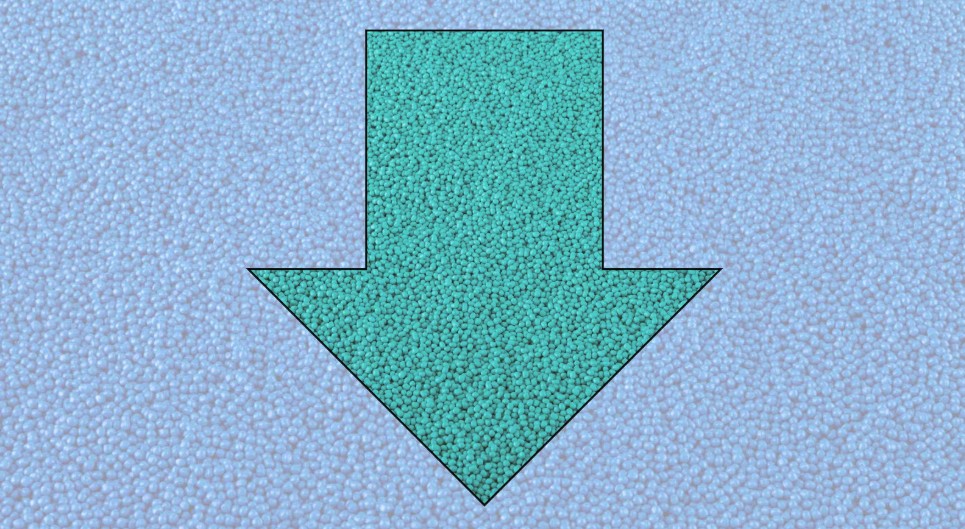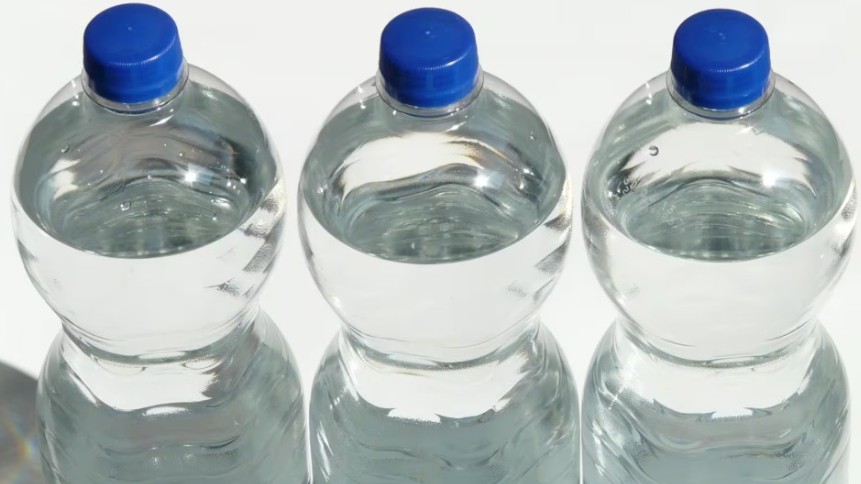Market trends
Plastic materials shine bright with a future in LED market
작성자 : Aeyoung Park
2018-05-04 |
조회 : 4190
LED lighting is a growing market and is out selling other lighting technologies. Thanks to the developments of plastics technology, the majority of LED lighting products can benefit from the use of plastic materials for higher efficiency and more design freedom.
In addition to their high energy efficiency and luminous efficacy, LEDs also offer a long service life and feature low maintenance costs, and are environmentally sound. In the US, the Department of Energy estimates that LEDs will comprise 84% of the lighting market by 2030.
This has spurred significant development among material suppliers for new formulations aimed at offering better solutions for LED illumination at the forefront, which means a bright future to the both industries.
It also represents more options and new opportunities for processors, primarily injection molders and sheet extruders, with a stake in this burgeoning market.
The possibilities for developing modern head lamps, edge-lit lenses or designer lighting are so many, and the requirements to be met by new materials are just as varied as the applications themselves.
Acrylic and polycarbonate have by and large replaced glass in LED lamps and luminaires. More recently, they have been joined by liquid silicone rubber (LSR). Specialty rigid PVCs for lenses and housings have also emerged. Some thermally conductive compounds aimed at replacing die-cast aluminum heat sinks are also paving their ways in the market.
Material suppliers are definitely aware of the challenges ahead, and are striving to adapt to the rapid LED evolution to meet both performance and cost objectives.
Acrylic for lens with specific structures
Lighting is the third biggest power guzzlers in supermarkets after cooling and air-conditioning. Switching to energy-efficient LED lighting can cut power consumption, in particular wherever large surface areas need to be lit up.
SPAR Austria, a retail leader in Europe, therefore has been equipping all of its new branches with LED lights from Zumtobel and is also refitting its existing branches.
Zumtobel is an international lighting group and a leading supplier of innovative lighting solutions. “In supermarkets, efficient LED lighting often pays off after as little as 18 months, compared with neon lighting,” said Dieter Safarik, global key account manager for supermarkets at Zumtobel. “Today it makes no sense not to use LEDs.”
The challenge was to find a solution to adjust the light distribution of the LEDs to the special requirements of supermarkets in which the main elements to be lit up are the shelves.
As Dieter Safarik explained, the LED lights normally only illuminate the floor as evenly as possible, therefore the new LED lights need a light-guiding material that enables vertical illumination of the entire shelf front, as evenly and brightly as possible. Meanwhile, the floor area that often becomes soiled in poor weather is kept darker on purpose.
Evonik’s PLEXIGLAS was chosen to meet these requirements. Various grades of PLEXIGLAS molding compounds are used for the manufacture of optical covers and special lenses.
This trademarked acrylic offers high light transmission of 92% and is especially suitable for lighting applications. The material also remains transparent for a long time and shows no yellowing.
The material is able to accurately reproduce the lens surface, and has good light-guiding properties. This combination allows for manufacture of lenses with specific structures that provide variable directional characteristics.
High diffusion provides pleasant and efficient lighting
Apart from supermarkets, PLEXIGLAS is also the material of choice for providing uniform and pleasant light in workplaces. The diffusers of the re-designed LED lamp heads from Jakob MAUL GmbH are made of PLEXIGLAS Satinice df23.
“The quality of light in a workplace has a distinct influence on the motivation and performance curve,” says Uwe Hartmann, development engineer at Jakob MAUL GmbH. In the worst case, improper lighting or a lack of light can even lead to health impairments.
“Therefore, the most important thing for a desk luminaire is that the light provides pleasant visibility – for instance, not cause glare or cast annoying shadows,” explains Hartmann.
Particularly when a company needs a lot of lights, however, the energy efficiency of the office lighting also plays an increasingly important role. Jakob MAUL GmbH in Bad König has therefore added LED luminaires to its product range.
The advantages of these modern lighting systems are far superior to conventional lighting in regard to light yield, efficiency, and service life. In addition, thanks to their smaller size, they allow slim design.
The combination of optimal light-diffusing effect and low transmittance loss provides efficient workplace lighting.However, LEDs alone do not create pleasant lighting. When LEDs are used, there are also increased requirements upon the lamp materials. For example, they require better thermal management than other types of lighting. In addition, they depend on a light-diffusing element, which distributes their punctiform light in an optimal way.
In the latest generation LED table luminaires, Jakob MAUL GmbH has therefore not only adapted the cooling ribs, but for the first time is also using a diffuser cover. It is installed in front of the LEDs and, combined with a reflector, provides a greater surface of illumination.
Overlapping shadows are thus avoided. The edge of the illuminated area is not demarcated so abruptly, and the infinitely adjustable color temperature is rendered accurately,” explains Hartmann.
The company produces the diffuser cover sheet in an injection-molding process using the light-diffusing molding compound PLEXIGLAS Satinice df23. This is a special molding compound from Evonik that is particularly well adapted to the requirements of lighting systems.
Evonik has even developed separate formulations of its branded polymethyl methacrylate (PMMA) for the different requirements, as every function that light can perform places its own requirements upon the light-diffusing or guiding material.
Jakob MAUL GmbH chose PLEXIGLAS Satinice df23 because the material offers the optimal light-diffusing effect along with low transmittance loss.
“It is only through this combination that we are able to provide efficient workplace lighting,” says Hartmann.
A model with the new lamp head, the MAULoptimus, has been nominated for the prestigious design prize German Design Award 2018.
LSR for higher optical clarity
LSR suppliers remark that their materials can replace glass and thermoplastics, offering the durability, clarity and design freedom for next generation LED lighting that was not previously possible for applications such as automotive and outdoor and technical lighting.
Operating temperatures for emerging LEDs are higher than before as designers increase the level of driving current in LEDs while decreasing the overall size of the lighting fixture. The high temperatures may cause conventional epoxies and thermoplastics to turn yellow and physically degrade over time.
Momentive Performance Materials is a pioneer in LSR technology, its Silopren LSR 7000 series advances the LED lighting revolution with an even clearer, more durable material to make designers’ creative ideas a reality.
The company demonstrated the processing capabilities and benefits of the Ultra Clear Silopren LSR 7000 series and other LSR for optical applications live using injection molding at the LIGHTFAIR International of last year.
Silopren LSR 7180 LSR, the newest product in the series, combines UL 94 V1 and 5VA flame resistance with excellent optical clarity and long-term color stability. In addition, it is f1 rated for outdoor use in accordance with UL 746C. This additional feature can offer significant performance enhancements for SSL design in LED lighting and optical applications.
PVC compounds for luminaire housings
PolyOne announced at the recently held Strategies in Light 2018 that it can enable LED lighting manufacturers to successfully innovate by combining its portfolio of flame-retardant, specialty polymers with collaborative design services.
The company has commercialized grades of its Resilience LS (Luminaire Series) PVC compounds into lighting applications such as lenses and housings. The emerging LED lighting has created opportunities as well as challenges for PVC, as the materials around them have to last for a long time, according to PolyOne.
The outdoor landscape light deck from the Nuvi collection by Hinkley. The materials are being used in luminaire housings made by Hinkley Lighting, an innovative lighting manufacturer, which was looking to develop a new light for its outdoor landscape category. The new LED housings must have strong chemical and corrosion resistance, UV tolerance, high strength, high impact resistance and long-lasting aesthetics.
The Resilience LS family of rigid vinyl formulations offers long-term color hold, UV stability and thin-wall 5VA flame retardancy to meet the technical requirements.
Unlike other polymer compounds, rigid vinyl’s inherent flame retardancy and UV resistance require minimal amounts and reduced types of additives in order to maintain long-lasting color and protection for the LED’s and electronic circuitry, says PolyOne.
Besides, the total manufacturing costs were reduced by more than 25% compared to metal as a result of faster cycle times, increased productivity and reduced scrap.
The collaboration resulted in the award-winning Nuvi hardscape luminaire, which features a textured housing in multiple brilliant finishes. The durability of Resilience LS rigid vinyl complements the beautiful design to provide low maintenance performance and many years of lasting color.
Flame retardancy is a fundamental requirement for all electrical applications seeking UL approval, and LED lighting is no exception. The Resilience LS Vinyl Polymers are formulated to meet UL flame rating standards.




















